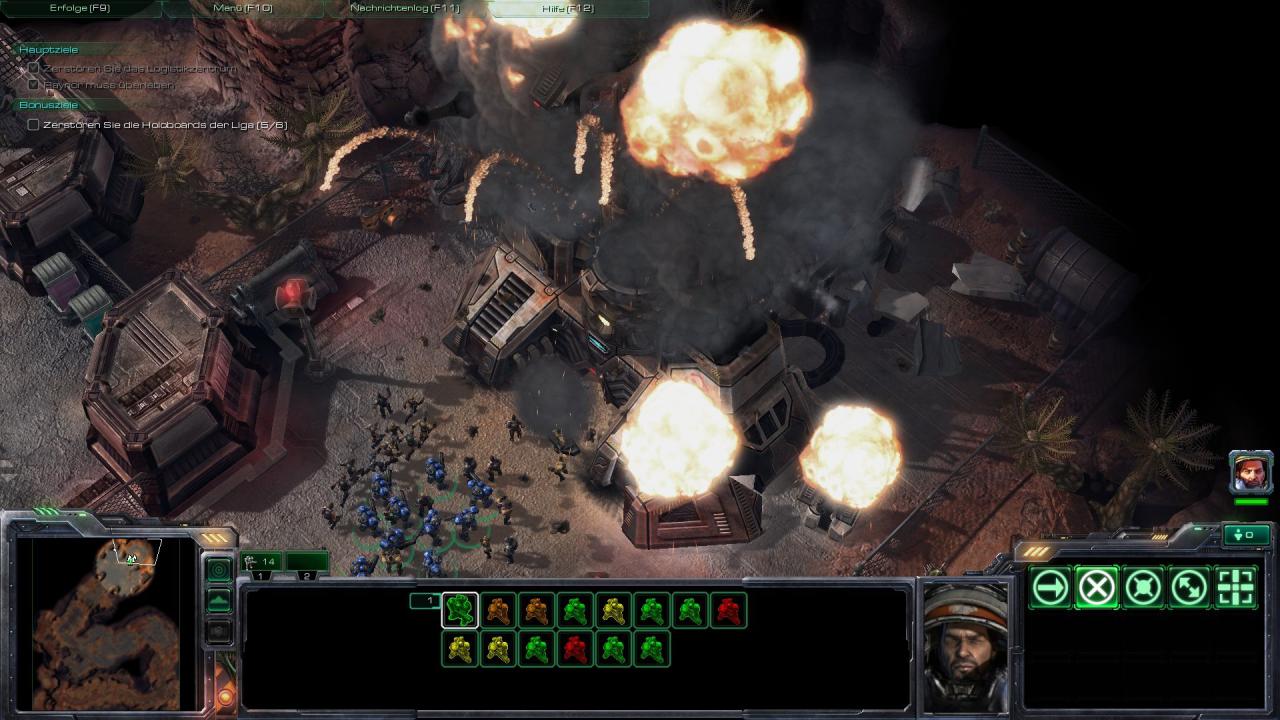

The campaign also does a decent job of preparing the player for online play, as many of the missions required me to move quickly when setting up my base and readying my forces for combat. Victory is hard-won, but I think the reward of watching a well-built machine obliterate my opponent (the few times I got to see it happen) is worth it. It also requires a good amount of research beforehand and lots of practice, but the reward is there for players who seek it. It's like speed chess, and the ability to think quickly is key. Don't be fooled-getting good at StarCraft is hard. I lost every placement match I played, and routinely got mauled even in the practice matches. This is one of the reasons I lament the loss of local LAN play, as playing over the internet still isn't quite the same as hosting a game with a group of in-person friends and trying to see if three of us can finally take down a Very Hard Zerg.īefore going on, a confession: I am bad at StarCraft. Having to wait for a player to reconnect every now and then got pretty annoying, but the waits weren't too long, and I never had a game simply drop me due to network problems. However, network lag was a bit of a problem at times. In-game chat and friend-related functions are also improved, and getting to getting together with acquaintances to crush Very Easy Zerg took only minutes. The matchmaking system works great, and I never had problems finding or hosting a game. In terms of multiplayer, the new features really help the experience along. Keeping a level field among not two but three different sides was a major feat of StarCraft, and StarCraft II has kept that facet alive and strengthened it with the introduction of several new units. This balance is especially difficult in RTSs, as the multitude of strategies and unit types available to the player results in something akin to a speed chess match where all the pieces can move anywhere they want, whenever they want. Any advantage a particular class or race has must be offset by a corresponding disadvantage or vulnerability to another kind of player, essentially boiling down to a game of rock/paper/scissors with spaceships.

It does however, introduce many small improvements that make it a worthy successor.Ī hallmark of any great multiplayer game is balance. Is StarCraft II revolutionary? Not in the slightest. Blizzard, to their credit, appears to have realized this and chosen not to tinker too much with a formula that had already been proven to work so well. StarCraft II will never be what its predecessor was in terms of impact on the genre, or impact on gaming as a whole. The answer is surprisingly simple: nothing. In the face of all that StarCraft accomplished, what could we as gamers possibly hope for from StarCraft II with the release of Wings of Liberty? What can it do that would alleviate the chants of "It'll never be what the first game was" that will no doubt emanate from the gaming masses? It was the standard bearer for the strategy games, featuring a mix of balance, atmosphere, and penchant for epic multiplayer battles that had never been seen before. Its impact on competitive gaming and the RTS genre cannot be understated.
#Starcraft ii wings of liberty screenshots full
Even a full twelve years after its release there are still legions of dedicated players around the world. WTF: Zeratul: "I don't have time to explain….so stare at this crystal for like four hours…." LOW: The cringe-inducing "happily ever after" ending. HIGH: Swarming marines with carriers and watching them go crazy trying to shoot all the interceptors.


 0 kommentar(er)
0 kommentar(er)
